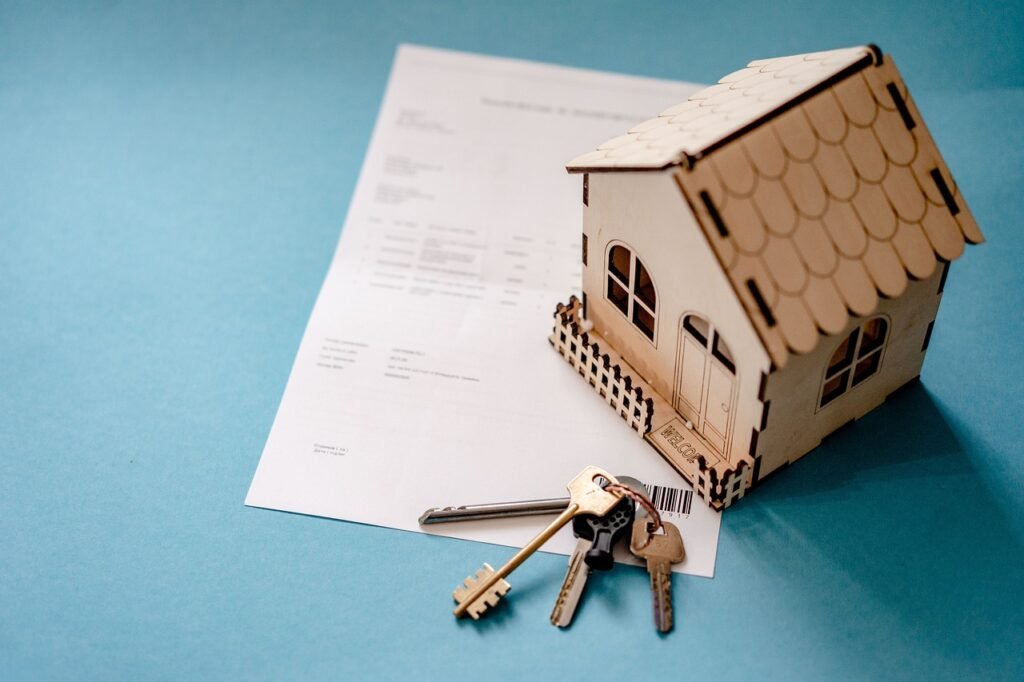Are you making sure your investment is safe and your tenants are secure? Regular checks are key for a good landlord. But, do you know how to do them right? This guide will cover everything you need to know about inspections.

Key Takeaways
- Periodic rental property inspections are vital for maintaining your investment and ensuring tenant safety
- The industry recommends carrying out inspections every 3-6 months to address changing seasonal conditions
- Landlords must provide at least 24 hours’ notice before an inspection, as per the 1988 Housing Act
- Tenants have the right to refuse access in non-emergency situations, so flexibility is key
- Regular inspections help foster a positive landlord-tenant relationship and identify any potential issues
Importance of Regular Property Inspections
As a landlord, it’s key to check your rental property often. This keeps the property in good shape and makes sure your tenants are happy. Inspections let you see how the inside and outside of the property are doing. They help you spot repairs or maintenance that’s needed.
Why Regular Inspections are Vital
Regular checks are a must for many reasons. They keep you ahead of any problems, so you can fix them quickly. This way, you keep your property’s value up and show your tenants you care about their well-being.
Benefits of Periodic Inspections
- Early spotting of maintenance issues, making fixes cheaper and quicker
- Keeping an eye on how tenants look after the property
- Chance to talk about any worries or questions tenants might have
- Keeping the property looking good to draw in and keep good tenants
- Ensuring the property is safe and meets all the rules
- Getting info to plan for maintenance and budgeting
By doing regular property walk-through inspections and making detailed rental property condition reports, you can keep a close eye on your investment. This makes moving in and out of the property smooth for everyone.

Frequency of Rental Property Inspections
As a UK landlord, keeping your rental property in good condition is crucial. Regular checks are as important as the initial ones. They help keep your property safe and sound, as the law demands. They also let you fix problems fast and keep a good relationship with your tenants.
Recommended Inspection Intervals
Here’s a common schedule for UK landlords:
- Annual inspections to check the property’s overall state
- Periodic inspections (like every 3 months) to keep an eye on upkeep and tenant behaviour
- Check-in and check-out inspections at tenancy start and end to record the property’s condition
For new tenants, you might inspect the property every 3 months to check maintenance and inventory. For longer tenants, an annual check might be enough if previous inspections were good.
Agreeing on an Inspection Schedule
Talking about an inspection schedule with new tenants is a good idea. It sets clear expectations and builds trust. Remember, you must give tenants 24-hour notice before inspecting the property in the UK.
Regular uk rental property maintenance inspections, documenting rental property inspections, and rental property inventory checks are key. They keep your rental in top shape and protect your investment. Working with your tenants and following best practices helps you and your tenants get along better.

Providing Proper Notice for Inspections
As a landlord, knowing the legal rules for giving notice to tenants is key. The 1988 Housing Act gives tenants the right to live in their home without interruption. They can enjoy their space without the landlord or others bothering them.
Legal Requirements for Giving Notice
The Landlord and Tenant Act 1985 s11 says landlords must give tenants at least 24 hours’ notice before an inspection. This notice should be clear and given well in advance. It lets the tenant get ready for the inspection.
- Landlords must provide at least 24 hours’ written notice for property inspections.
- It’s best to give more notice, up to a week, to let the tenant prepare.
- Inspections should happen at a reasonable time of the day, as the law says.
Getting along with your tenants and talking openly is crucial. Giving the right notice and respecting their quiet enjoyment builds trust. This makes the inspection process smoother.
Tenant’s Right to Refuse Access
As a landlord, knowing that tenants can legally refuse your access is crucial. This is true even if you have a clause in the tenancy agreement. This right applies unless there’s an emergency or strong evidence of illegal activity.
Tenants might not want access for many reasons, like the inspection date not fitting their schedule. Being flexible and finding a new time that works for both is wise.
- Tenants may claim illness, mental health issues, or a viral pandemic as grounds for refusing access.
- If a tenant refuses access, it’s crucial for landlords to exercise reasonableness, show willingness, and be as flexible as possible to reach a mutually agreeable solution.
If a tenant won’t let you in, you might need to take further action. You could ask a legal services company to help you get an injunction and enter the property legally.
| Reason for Accessing Rental Property | Minimum Notice Period |
|---|---|
| Repairs and Maintenance | 24 hours |
| Property Inspections | 24 hours |
| Emergencies (Fire, Gas Leak, Structural Damage, Water Leaks) | No notice required |
Landlords must follow the law when entering the property, as stated in the Landlord and Tenant Act 1985 and the Housing Act 1988. Not doing so could be seen as harassment. This could lead to legal trouble under the Protection from Eviction Act 1977.
Entering the Property in Emergencies
As a landlord, you hope to never have to enter your rental property in an emergency. But, unexpected situations can happen, making it necessary to enter without notice or consent. These situations include fires, gas leaks, urgent repairs for safety, or signs of dangerous or criminal activity.
In emergencies, you can enter the property without notice or permission. Use your common sense to decide if a situation is an emergency. Always put the safety of the property and the tenant first.
Even though you have the right to enter in emergencies, be careful and respect the tenant’s rights. Act reasonably, document everything, and be ready to explain your actions if the tenant questions them.
| Landlord Entering Property in Emergencies | Tenant’s Rights |
|---|---|
|
|
Understanding the laws about entering rental properties in emergencies helps you act right while respecting tenant rights. It’s key to balance your duties as a landlord with the tenant’s rights. This balance keeps the landlord-tenant relationship positive.
Statutory Inspection Checks
As a landlord, you must make sure your rental property is safe and meets legal standards. Regular checks are key to this. They help you keep up with safety rules like gas, fire, and energy efficiency standards.
Legal Responsibilities for Landlords
It’s vital for landlords to follow the law. This means getting an annual gas safety check from a Gas Safe engineer. You also need to keep the Electrical Installation Condition Report (EICR) updated every 5 years.
You must fit and test smoke alarms and carbon monoxide detectors too. Also, having a valid Energy Performance Certificate (EPC) is a must. For Houses in Multiple Occupation (HMOs), you might need a special licence based on local rules.
Following these statutory inspection checks and legal responsibilities for landlords is essential. It keeps your rental safe and legal. Regular checks help spot and fix problems early, keeping your tenants safe and within the law.
Property Condition Assessments
As a responsible landlord, it’s key to check your rental home regularly. This ensures it’s well-kept and works well. You should look at both inside and outside to spot any issues early.
Interior Inspection Checklist
When checking inside, focus on these areas:
- Look for damp or mould in every room
- Check taps and pipes for leaks or water pressure problems
- Make sure smoke detectors and carbon monoxide alarms work
- Check the condition of any appliances, furniture, or items you provide
- Look for cracks, stains, or damage on walls, floors, and ceilings
- Check windows, doors, and locks to make sure they work well
Exterior Inspection Checklist
The outside of your property is just as important. Make sure to inspect these things:
- Check gutters and downspouts for blockages or leaks
- Look for loose or damaged paving, fencing, or outbuildings
- Assess the roof, including tiles, chimneys, and flashing
- Check the exterior walls, paint, and trim for wear or damage
- Ensure the property’s number, mailbox, and parking areas are okay
Regular, detailed checks of your rental property’s inside and outside help you stay ahead. This means you can fix any issues early. It keeps your investment’s value up and makes sure your tenants have a safe, comfy place to live.
Identifying Tenant Breaches
As a landlord, it’s vital to check your property regularly. This isn’t just for the property’s condition but also to spot tenant breaches. These checks let you see if your tenant is sticking to the agreement and not causing damage or breaking lease rules.
Look closely at how the tenant keeps the property clean and well-cared for. Is it in good shape, or does it show signs of neglect? Spotting issues early can prevent bigger problems later.
- Check for any unauthorised modifications or alterations the tenant may have made without your consent.
- Inspect the property for any evidence of excessive wear and tear or intentional damage.
- Ensure the tenant is not harbouring unauthorised occupants or subletting the property.
- Verify that the tenant is using the property solely for residential purposes, as stipulated in the tenancy agreement.
If you find any breaches during an inspection, deal with them quickly and professionally. Talking to your tenant is key. Discuss the issues, listen to their side, and find a solution that suits everyone.
By keeping an eye out and acting fast, you can keep your rental property in good shape. This also helps you and your tenant work well together.
UK landlord’s guide to rental property inspections
As a UK landlord, it’s vital to check your rental property often. This ensures it’s in good shape and tenants meet their duties. This guide covers the legal bits and how to inspect properly.
By sticking to these tips, you keep your property safe and spot problems early. This helps you and your tenants get along better. It shows you care about keeping a safe place for your tenants.
You can inspect your property legally, but remember to tell your tenants first. Give them 24 hours’ notice, as the law says. This way, everyone knows what to expect, making inspections smoother for all.
- Check your property regularly to spot any repairs needed and keep it in good shape.
- Always give your tenants at least 24 hours’ notice before you inspect, as the law demands.
- If tenants keep saying no to inspections, you might need a court order to see the property.
- In emergencies like a gas leak or fire, you can enter without asking the tenant first.
- Keep talking with your tenants and work together to make inspections easier for everyone.
Follow these tips for inspecting rental properties to protect your investment and keep tenants safe. Remember, regular checks are smart and show you’re a caring landlord in the UK.
Differentiating Wear and Tear from Damage
As a landlord, knowing the difference between fair wear and tear and actual damage is key. This knowledge helps you manage your property well and prevents disputes with tenants over deposits.
Fair Wear and Tear Guidelines
The UK defines wear and tear as “Reasonable use of the premises by the Tenant and the ordinary operation of natural forces”. This means some gradual wear is normal and accepted. Examples of fair wear and tear include:
- Slight carpet damage or fading
- Loose fixtures and fittings
- Scuffed flooring
- Worn countertops
But, excessive wear and tear or damage may include:
- Unreported carpet staining
- Marks on the walls
- Chipped flooring
- Burns to the carpet
- Broken windows, doors, or appliances due to misuse
The longer a tenancy lasts, the more wear and tear you can expect. Also, a property rented by a family of 4 with a dog will show less wear than one rented by a single person with no pets.
Understanding fair wear and tear helps landlords manage their properties better. It also helps avoid disputes with tenants over deposits. Regular inspections and clear communication are important for a smooth end to tenancies.
Conclusion
Regular property inspections are key for UK landlords. This guide shows how to keep your rental property in good shape. It helps you check your tenants are doing their part and fix any problems quickly.
Always remember to respect your tenant’s rights and give them enough notice for inspections. Being flexible with inspection times is also important.
Good property management protects your investment and builds a strong relationship with tenants. Keep in touch with your tenants, document inspections, and solve any issues fast. This keeps your rental property in good condition and follows the law.
It’s important to know the latest on landlord laws, like the Right to Rent checks. This keeps you up to date with UK rental laws and avoids fines. Regular inspections and good management mean a safe, well-kept home for your tenants and protection for your investment.




